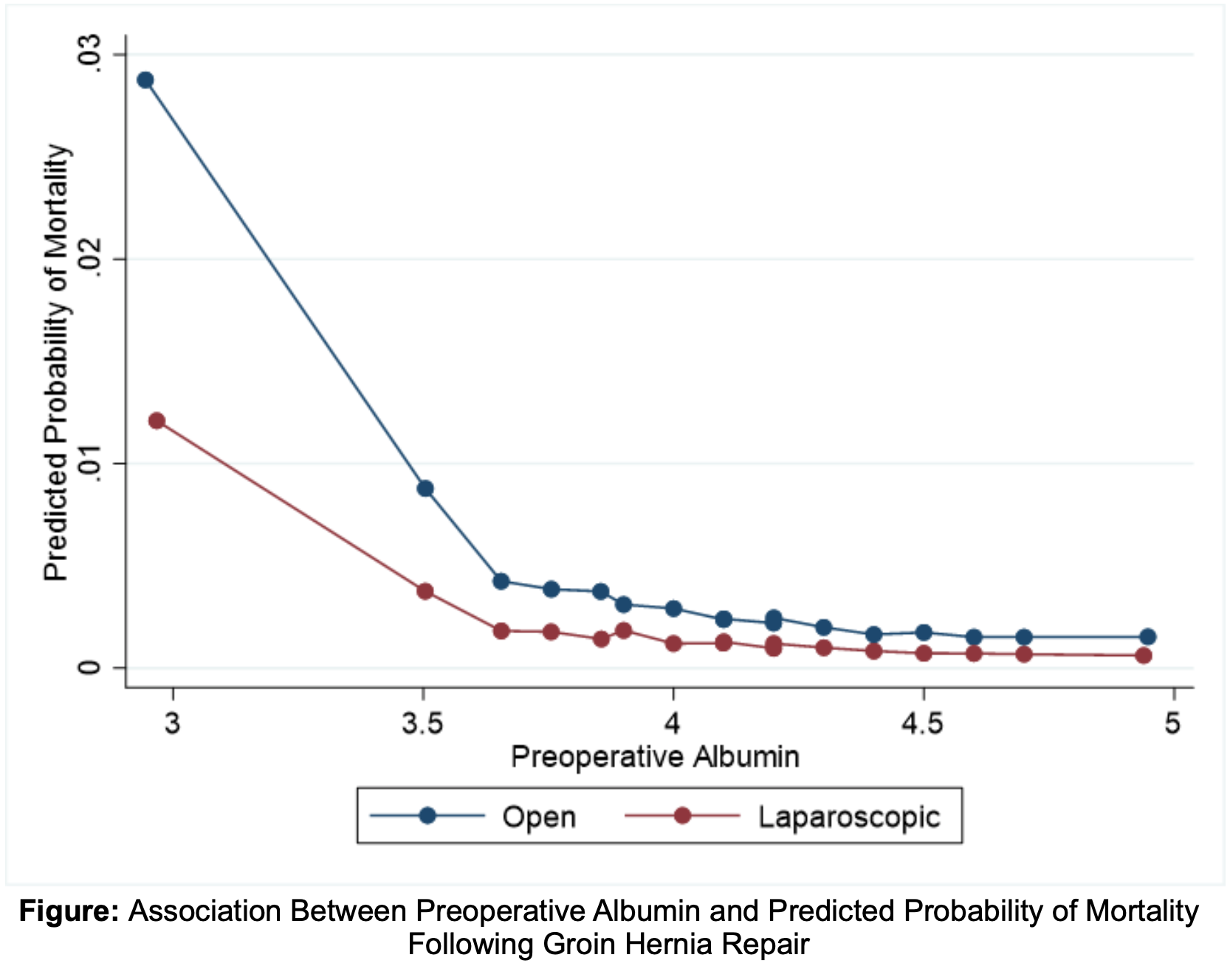R. Mabeza1, C. Pan1, J. Hadaya1, M. Park1, C. Lee1, I. MacQueen1, P. Benharash1 1David Geffen School Of Medicine, University Of California At Los Angeles, Los Angeles, CA, USA
Introduction: Malnutrition has been associated with increased mortality and morbidity following various surgical procedures. However, its impact on outcomes following groin hernia repair has yet to be studied in a contemporary, national cohort. The present study aimed to assess the association of malnutrition with postoperative outcomes and resource use following groin hernia repair.
Methods: Adults (≥ 18 years) undergoing inguinal or femoral hernia repair (open and laparoscopic) were identified using the 2006-2019 American College of Surgeons National Surgical Quality Improvement Program Database. Patients with no recorded preoperative serum albumin were excluded. Malnutrition was defined as a preoperative albumin level < 3.5 g/dL. Multivariable regression models were developed to assess the association of malnutrition with outcomes of interest including 30-day mortality, complications (infectious, respiratory, and thrombotic), reoperation, postoperative length of stay (LOS), and readmission.
Results: Of the 106,555 patients meeting inclusion criteria, 8,002 (7.5%) were malnourished. Compared to others, malnourished patients were older (54.1 vs. 48.0 years, p<0.001), more commonly female (11.7% vs. 9.3%, p<0.001), and more frequently underwent an emergency (12.7% vs. 2.5%, p<0.001) or open procedure (82.5% vs. 66.6%, p<0.001). After risk adjustment, malnutrition was associated with greater odds of 30-day mortality (AOR 2.94, 95% CI: 2.30-3.77), infectious (AOR 1.71, 95% CI: 1.46-2.01), respiratory (AOR 2.07, 95% CI: 1.55-2.76), and thrombotic complications (AOR 1.72, 95% CI: 1.18-2.52). Additionally, malnutrition was associated with greater odds of readmission (AOR 1.79, 95% CI: 1.58-2.03) and increased LOS (β: +0.4 day, 95% CI: 0.3-0.4). Decreasing serum albumin levels were associated with increased probability of mortality for both open and laparoscopic hernia repairs, with significantly increased mortality at an albumin ≤ 3.5 (Figure).
Conclusion: Decreased preoperative serum albumin is associated with increased mortality and morbidity following open and laparoscopic groin hernia repair. Serum albumin remains a relevant predictor of postsurgical outcomes and can thus be used in counseling and shared decision making with malnourished patients in need of groin hernia repair.
